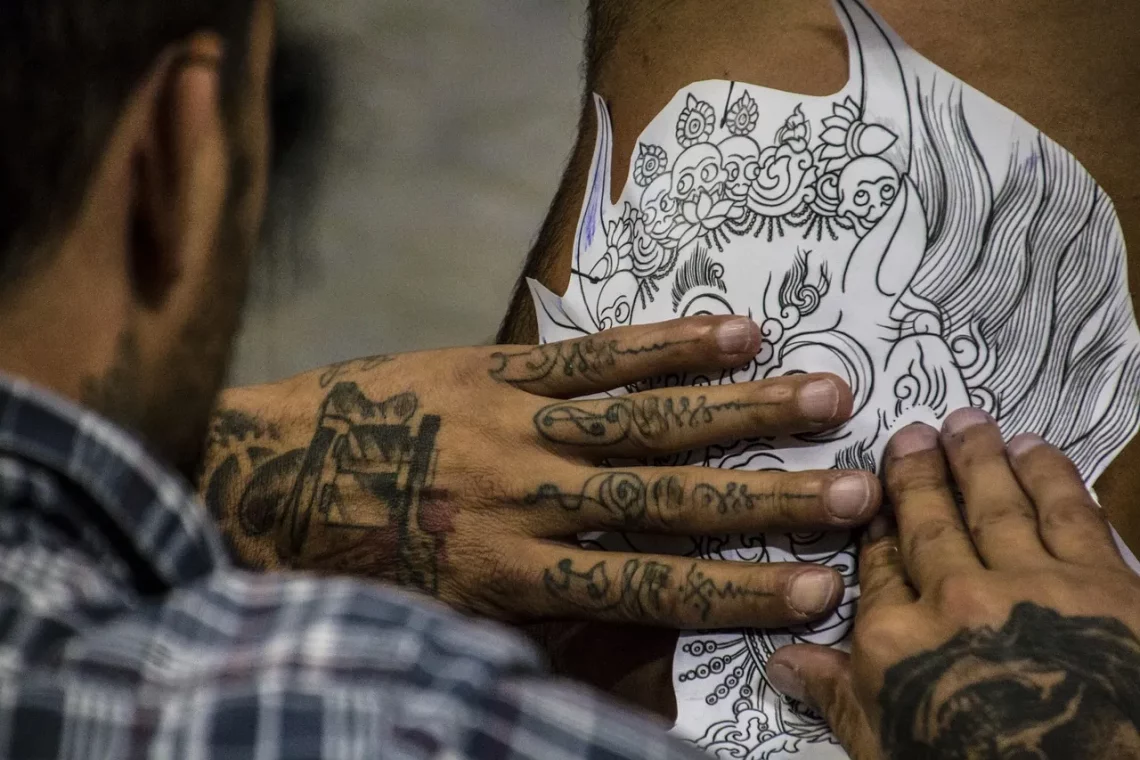
Finding Healing: The Power of Anxiety Depression Tattoos
Finding solace in art is a profound journey that many individuals embark on, particularly those grappling with anxiety and depression. The act of transforming emotional pain into visual expression fosters a unique healing process, allowing individuals to externalize their internal struggles in a meaningful way. Tattoos, often perceived as mere body art, can serve as powerful symbols of resilience, hope, and personal transformation. Each inked design tells a story, reflecting the wearer’s journey through mental health challenges, and offers a sense of empowerment and ownership over their narrative.
As society becomes more open about discussing mental health, the stigma surrounding anxiety and depression diminishes. This cultural shift encourages individuals to seek avenues for self-expression and healing, with tattoos emerging as a significant outlet. The process of getting a tattoo can be cathartic, offering a moment of mindfulness and reflection. For many, it’s not just about the artwork; it’s about reclaiming their bodies and their stories. The vibrant colors and intricate designs often serve as reminders of strength, perseverance, and the beauty that can emerge from the depths of struggle.
In this exploration of anxiety depression tattoos, we delve into the multifaceted relationship between body art and mental health, examining how these tattoos not only signify personal battles but also create a sense of community and understanding among those who share similar experiences.
Symbolism Behind Anxiety and Depression Tattoos
Tattoos often carry deep personal meanings for those who choose to ink their skin, especially when it comes to mental health. The symbolism behind anxiety and depression tattoos can vary widely, reflecting individual experiences, emotions, and journeys towards healing. Many people opt for designs that resonate with their struggles, such as semicolons, which represent continuation and hope in the face of adversity. This particular symbol has gained immense popularity within the mental health community, as it signifies that one’s story is not over, even when facing dark times.
Other common designs include flowers, birds, and natural elements, which can represent growth, freedom, and rebirth. For instance, a blooming lotus can symbolize the ability to rise above challenges and find beauty despite adverse circumstances. Such imagery serves as a reminder of resilience and the possibility of flourishing after hardship. Moreover, many individuals choose quotes or phrases that resonate with their personal experiences, providing daily motivation and encouragement.
The choice of tattoo design often becomes a way to reclaim power over one’s narrative. By selecting symbols that reflect their journey, individuals can take ownership of their struggles and transform them into sources of strength. This process can be incredibly empowering, allowing individuals to embrace their mental health challenges rather than hide them. Each tattoo serves as a personal reminder of the battles fought, the lessons learned, and the ongoing journey towards healing.
Additionally, the act of getting tattooed can itself be a therapeutic experience. Many find solace in the pain of the needle, viewing it as a form of catharsis. The physical sensation can create a contrast to the emotional turmoil they may be feeling, offering a moment of clarity and focus. This connection between physical and emotional experiences highlights the multifaceted nature of healing and self-expression.
The Healing Process and Ritual of Tattooing
The journey towards healing through tattoos often involves more than just the final design; it encompasses the entire process, from choosing the artwork to the experience of getting inked. For many, this journey becomes a ritual of sorts, providing a structured way to confront their emotions and express their struggles. The act of selecting a design can be a reflective process, prompting individuals to consider what their mental health journey means to them and how they wish to represent it.
Once the design is chosen, the tattoo session itself becomes a transformative experience. As the needle punctures the skin, individuals often enter a meditative state, focusing on their breath and the sensation of the ink being applied. This mindfulness can create a sense of calm amidst chaos, allowing them to temporarily disconnect from anxiety or depressive thoughts. The physical pain of tattooing can also serve as a reminder of survival, reinforcing the idea that they have endured difficult times and emerged stronger.
Moreover, the environment in which one gets tattooed plays a crucial role in the overall experience. Many tattoo artists are attuned to the emotional significance of the work they do, creating a safe and supportive atmosphere for clients. This can foster open conversations about mental health, allowing individuals to share their stories and feel validated in their experiences. Such connections can enhance the healing process, as individuals realize they are not alone in their struggles.
After the tattoo is completed, the artwork serves as a lasting reminder of this transformative journey. Every glance at the inked design can evoke memories of resilience and personal growth, acting as a source of strength during challenging times. The tattoo becomes a part of their identity, symbolizing their commitment to healing and self-acceptance.
Building Community Through Shared Experiences
One of the most powerful aspects of anxiety and depression tattoos is their ability to foster community among individuals with similar experiences. As people openly share their tattoo stories, they create connections that transcend isolation. This sense of belonging can be incredibly healing, offering support and understanding to those who may feel alone in their struggles.
Social media platforms have become vital spaces for this community building. Through hashtags and online groups, individuals can showcase their tattoos, share their stories, and connect with others who resonate with their experiences. These platforms provide a sense of validation, allowing individuals to see that their struggles are shared by many. The supportive comments and interactions can uplift spirits and reinforce the notion that healing is a collective journey.
Moreover, tattoo conventions and mental health awareness events often highlight the significance of body art in the recovery process. These gatherings create safe spaces for individuals to express themselves and share their journeys. As attendees showcase their tattoos, they engage in conversations about mental health, breaking down stigmas and fostering a culture of openness and understanding.
This community aspect is crucial, as it emphasizes that no one has to navigate their mental health challenges alone. By sharing their stories through tattoos, individuals can inspire others to embrace their journeys and find empowerment in their struggles. The collective experience of healing through art reinforces the idea that vulnerability can lead to strength, and that together, individuals can create a supportive network.
Choosing the Right Tattoo Artist
Selecting the right tattoo artist is a crucial step in the journey of getting an anxiety or depression tattoo. This choice can significantly impact the overall experience, as well as the quality of the artwork. It’s essential to find an artist whose style resonates with the intended design and who understands the emotional significance behind the tattoo.
Researching potential artists is often the first step. Many tattooists showcase their work on social media platforms, providing insight into their artistic style and approach. It’s beneficial to look for artists who have experience working with clients seeking tattoos related to mental health, as they may possess a deeper understanding of the emotional nuances involved.
Once a shortlist of artists is created, scheduling consultations can be invaluable. This meeting allows individuals to discuss their ideas, ask questions, and gauge the artist’s understanding of the tattoo’s significance. A good artist will listen attentively, offer suggestions, and create an environment where clients feel comfortable sharing their stories.
Additionally, it’s essential to consider the artist’s sanitation practices and professionalism. A reputable tattoo studio will prioritize hygiene and safety, ensuring a clean and sterile environment. Feeling safe during the tattooing process is paramount, as it allows individuals to focus on the emotional aspects of getting inked without added stress.
Ultimately, the right tattoo artist will not only help bring the envisioned design to life but will also contribute to a positive and affirming experience. The trust established between the artist and client can enhance the overall journey, making the tattoo a meaningful part of the healing process.
In conclusion, tattoos can serve as powerful symbols of resilience and healing for those navigating the challenges of anxiety and depression. They provide a unique avenue for self-expression, allowing individuals to reclaim their narratives and foster connections within a community of shared experiences. By choosing designs that resonate with their journeys and selecting the right tattoo artists, individuals can transform their emotional struggles into lasting works of art.
**Disclaimer:** This article is for informational purposes only and should not be considered medical advice. If you are experiencing health issues, it is crucial to seek guidance from a qualified healthcare professional.




